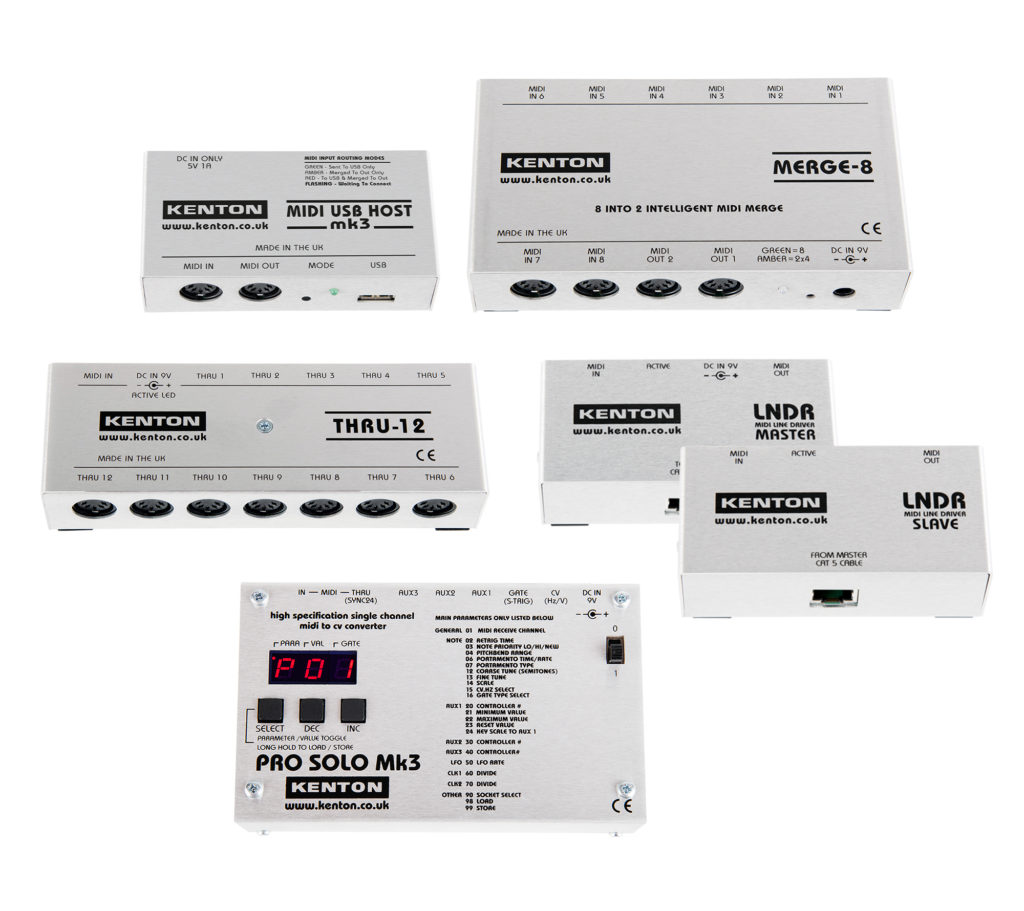
Hi there. Welcome to Kenton and thanks for clicking through from our good friends at Sound on Sound. We’re all about MIDI, and for more than 35 years we’ve been building ingenious, easy-to-use MIDI interfaces that enable keyboard players and electronic musicians to keep their synths, sequencers and controllers communicating with each other, regardless of their type or vintage
Split

Add twelve MIDI Thrus to your system with this high-quality Kenton MIDI Thru box. The THRU-12 receives MIDI data from a single MIDI OUT (e.g., a sequencer or master keyboard) and produces identical copies at the 12 MIDI THRU sockets. These can then be connected to the MIDI INs of sound modules or other devices which require MIDI signals sent to them. This high-quality Kenton MIDI Thru box features opto-isolated MIDI In and separate drive for each MIDI Out, and works for ALL MIDI messages including Clock, SysEx, MTC – with less than one microsecond latency. THRU-5 and THRU-25 also available.
Merge
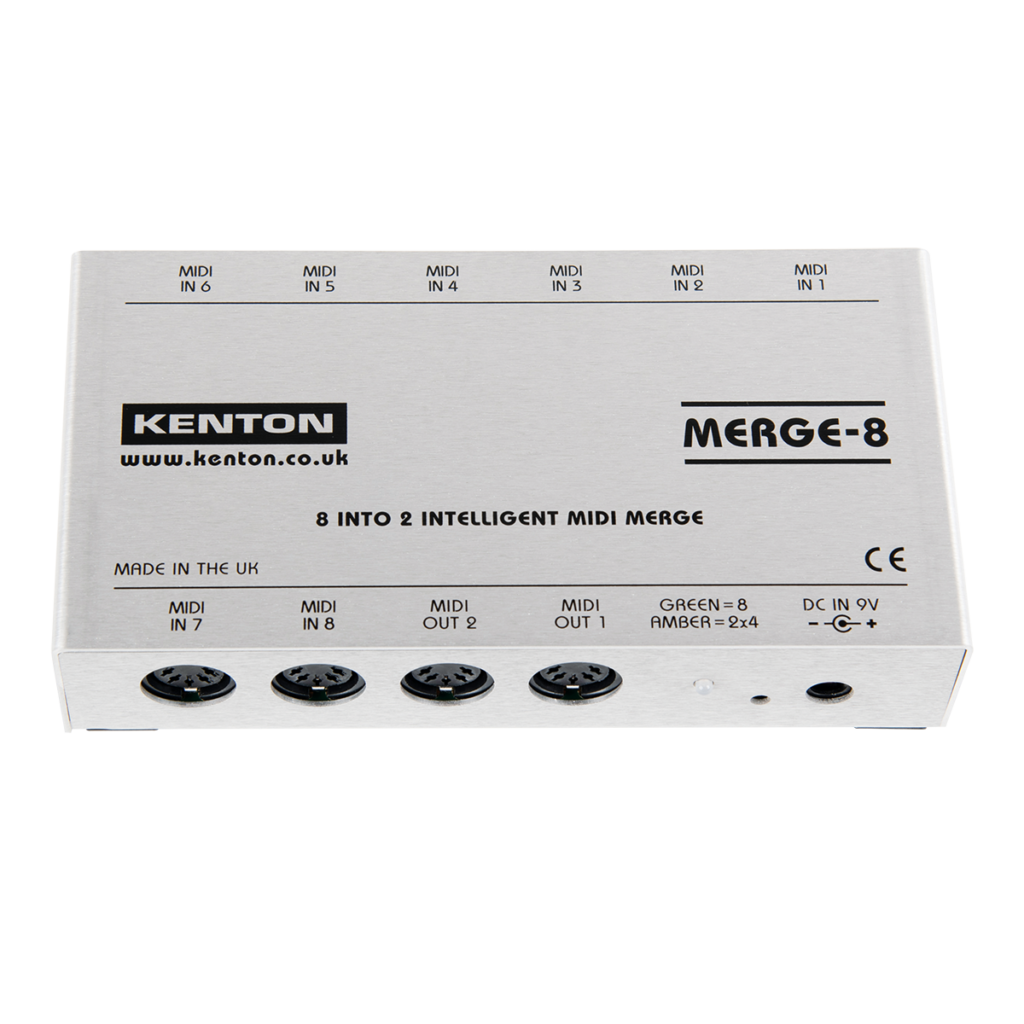
MERGE-8 merges the data from up to eight separate MIDI sources (e.g. Master keyboards or controllers) into a single MIDI data stream which appears at both of the MIDI out sockets. Merges all MIDI data including MIDI Clock, MIDI time code and SysEx. MERGE-4 also available.
Convert
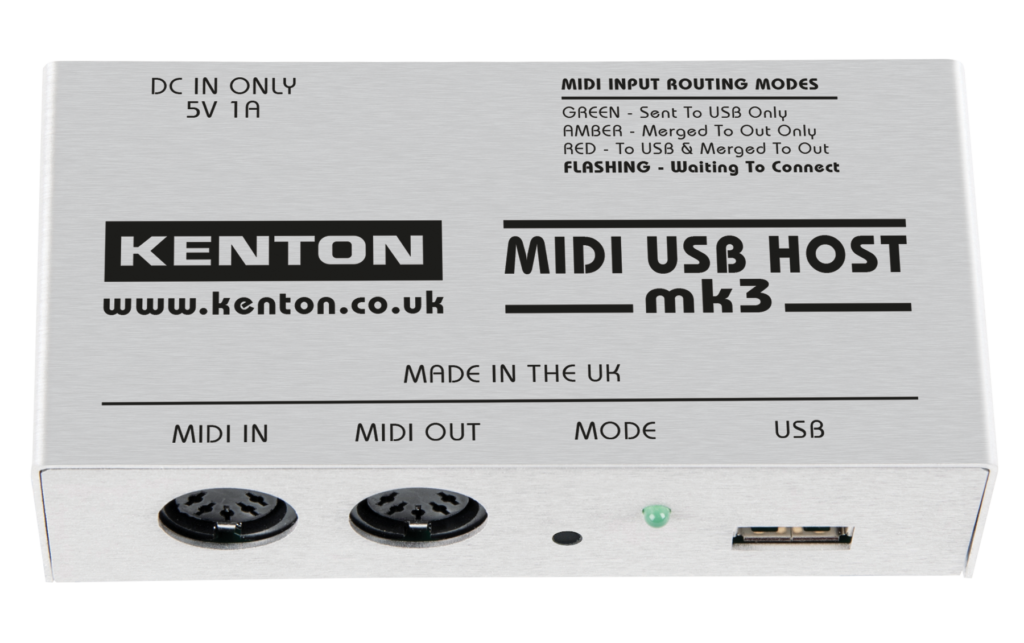
The MIDI USB Host provides a simple and straightforward means of connecting any “Class Compliant” USB device to a standard 5 pin DIN MIDI device without the need for a computer. Plug your USB device into the USB MIDI Host instead of a computer and it provides MIDI In & Out sockets for USB MIDI keyboards and controllers which have only a USB B type socket.
Control
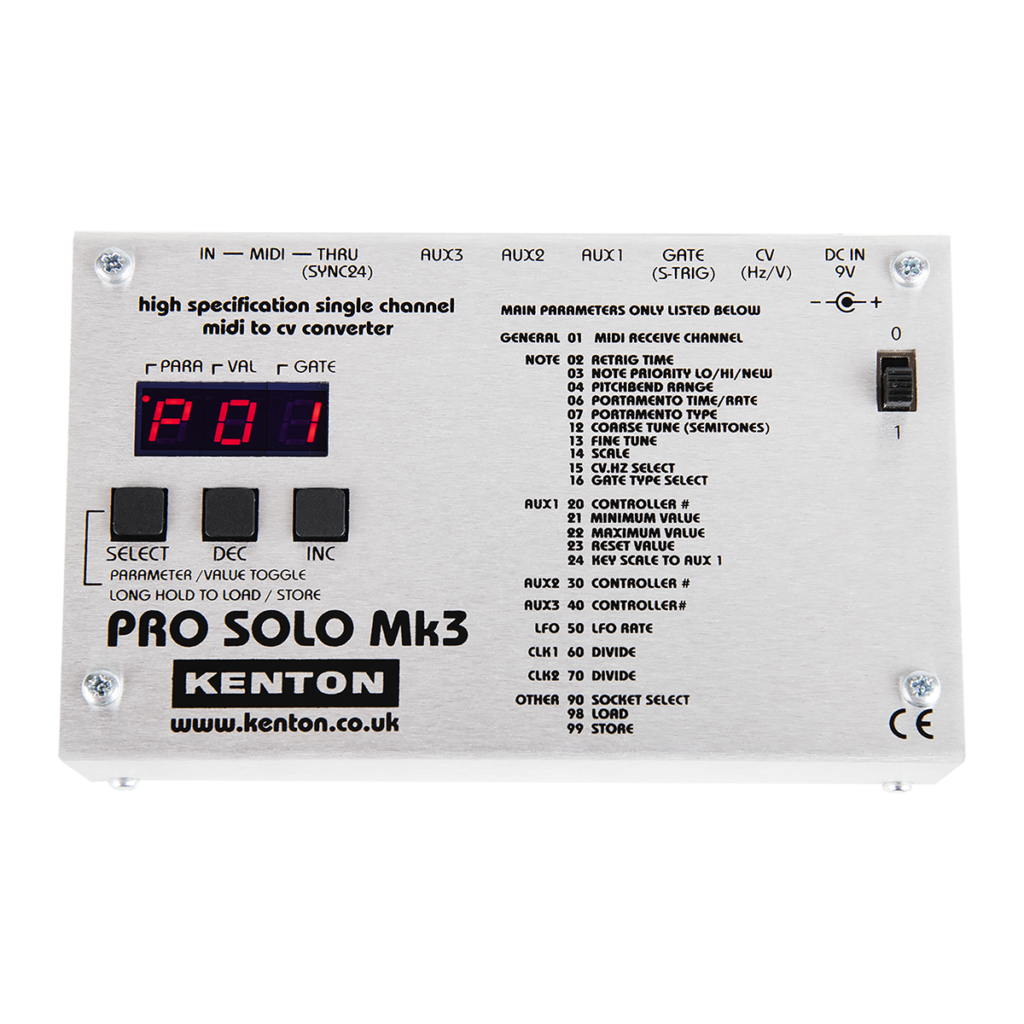
A must for vintage and modular synth fans, the Kenton Pro Solo Mk3 enables your MIDI keyboard or sequencer to control CV synths with V/oct, Hz/V & 1.2V/oct scaling systems. TR808 fans can even switch the Thru socket for Sync 24.
Extend
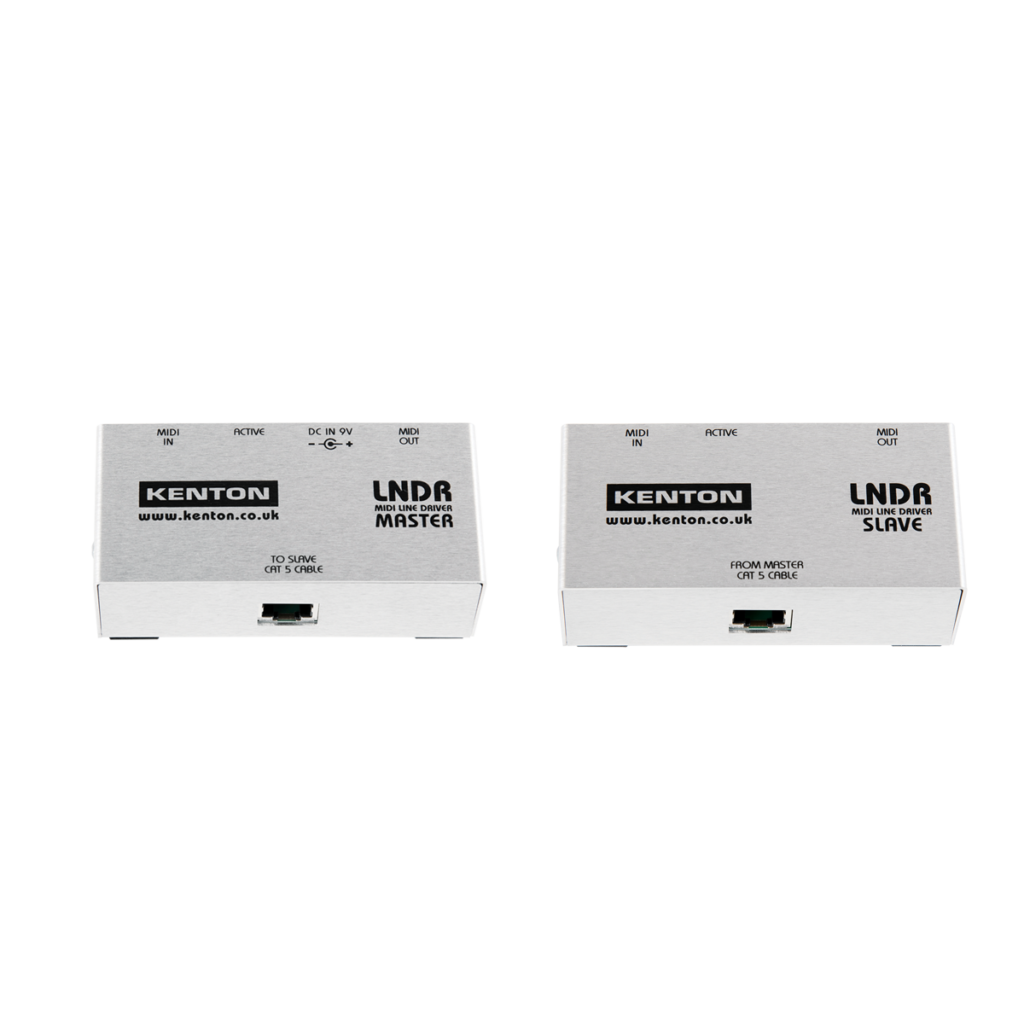
LNDR is a Main and Secondary pair that allows MIDI to be sent accurately in both directions across distances of over 500 metres (1640 feet) using a standard CAT5 cable. That’s over 33 times the distance achievable using standard MIDI cables!

